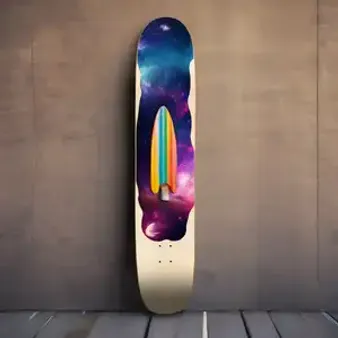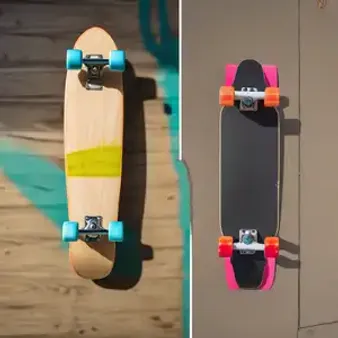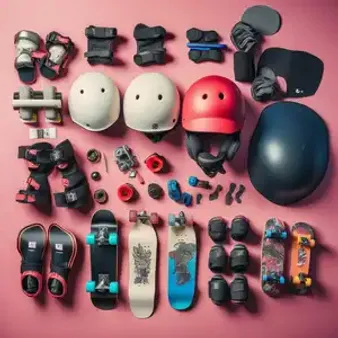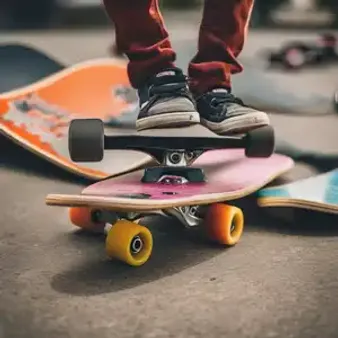Table of Contents
Kickstart your skateboarding adventure with the best skateboards for beginners! At kizworld, we understand that choosing your first board can be exciting and maybe a little overwhelming. That's why we've put together this comprehensive guide to help you navigate the world of skateboarding.
Feature | Description |
|---|---|
Type of Skateboard | Consider a classic popsicle deck or a cruiser for beginners. |
Deck Size | Opt for a deck width that suits your shoe size and riding style. |
Trucks | Choose trucks that match your deck size for stability and control. |
Wheels | Softer wheels (90A-98A) are ideal for beginners, offering a smoother ride. |
Bearings | Look for ABEC-rated bearings, with higher ratings indicating smoother rolling. |
Safety Gear | Always wear a helmet, knee pads, and elbow pads, especially when starting. |
Choosing the Best Skateboards for Beginners
Deck Talk: Picking Your Perfect Platform
Alright, new skater on the block, let's talk decks! Think of it like picking your ride - you want something comfy, right? For beginners, you can't go wrong with a classic popsicle deck. It's that iconic skateboard shape you've seen a million times. Why's it great for newbies? It's super versatile, letting you learn basic tricks and cruise around. Plus, they come in tons of cool designs. Imagine yourself rocking a board with flaming skulls or maybe a groovy galaxy print. Now we're talking!
- Skateboard Back Pack
- Skate Tony Hawk
- Wknd Skateboards
Sizing Up the Situation: Deck Width Matters
Now, before you grab the first awesome-looking deck you see, let's talk size. Just like your favorite pair of sneakers, you want a skateboard that fits your feet. Deck width is the key here. Too narrow, and you'll feel cramped. Too wide, and it's like trying to control a surfboard on wheels. Not cool! A good rule of thumb is to match the deck width to your shoe size. If you're rocking around a men's size 8 or smaller, aim for a deck width between 7.5" to 8". Got bigger feet? Look for decks around 8" to 8.5". And hey, don't be afraid to stand on a few boards at the skate shop to see what feels most comfy.
Deck Width | Shoe Size |
|---|---|
7.5"-8" | Men's 8 or smaller |
8"- 8.5" | Men's 8.5 or larger |
Choosing the Best Skateboards for Beginners
Types of Skateboards for Beginners
So, you're ready to roll, but you're wondering what kind of board to pick? Don't worry, it's not as complicated as a video game controller! For beginners, there are two main types you'll see: classic popsicle decks and cruisers. Remember those popsicle stick crafts we used to make? Well, the popsicle deck is kinda shaped like that - flat with a curved nose and tail. They're like the all-around sneakers of the skateboard world - perfect for learning tricks at the skatepark or just cruising to a friend's house. Cruisers, on the other hand, are more like your comfy sneakers for a chill day out. They're usually wider and have softer wheels, making them super smooth for riding on sidewalks and bike paths. If you want to learn more about different skateboard styles, check out this awesome article on how to get started with skateboarding.
Type | Pros | Cons |
|---|---|---|
Popsicle Deck | Versatile, great for tricks and cruising | Can be less stable for beginners |
Cruiser | Smooth and stable, perfect for cruising | Not ideal for tricks |
Types of Skateboards for Beginners
Essential Gear for Beginner Skateboarders
Gearing Up for Safety and Style
Okay, so you've got your awesome new skateboard – that's awesome! But before you hit the streets or the park, let's talk safety gear. Trust me, it's way cooler to look protected than to end up with scraped knees and a bruised ego. First things first, you gotta protect that noggin! A good helmet is non-negotiable. Think of it as your personal force field for your head. Make sure it fits snugly and covers your forehead. You don't want it sliding around when you're trying to land that epic trick. Next up, knee pads and elbow pads. Remember those times you tripped and fell as a kid? Yeah, those still happen, especially when you're learning to skateboard. These pads are like armor for your joints, absorbing those bumps and bruises so you can keep shredding. And hey, they come in cool designs too, so you can still look stylish while staying safe.
- How to Get Started with Skateboarding
- How to Train Like a Skateboarder
- The Best Skateboarding Gifts and Souvenirs
Finding Your Skate Style: Shoes and Clothes
Now that you're all geared up for safety, let's talk about looking the part! Skateboarding has its own unique style, and the right shoes and clothes can make you feel like a pro (even if you're still figuring out how to ollie). When it comes to skate shoes, look for ones with flat soles that give you a good grip on your board. They should be sturdy enough to handle all the wear and tear of skateboarding, but also flexible enough for you to move your feet comfortably. And hey, don't be afraid to express yourself with your shoe choice! From classic Vans to bold Nikes, there's a skate shoe out there for every personality. As for clothes, comfort is key. Loose-fitting pants or shorts will give you the freedom to move, and a t-shirt or hoodie will keep you feeling cool and confident. And hey, if you want to rock a skateboard brand logo or a cool graphic tee, go for it! The important thing is to feel comfortable and confident in what you're wearing.
Gear | Importance |
|---|---|
Helmet | Protects your head from injuries |
Knee Pads | Shield your knees from impacts and scrapes |
Elbow Pads | Provide cushioning for your elbows during falls |
Skate Shoes | Offer grip, board feel, and support for skateboarding |
Essential Gear for Beginner Skateboarders
Mastering the Basics: Tips for Beginners
Alright, so you've got your board, your safety gear is on point, and you're itching to ride. What now? Start by finding a smooth, flat surface like a driveway or empty parking lot. Believe me, tackling hills and ramps comes later! First, get comfy just standing on your board. Find your balance - it's kinda like learning to ride a bike again, but way cooler. Practice pushing off gently with one foot and finding your balance on the board. Once you're rolling, try steering by leaning slightly in the direction you wanna go. Check out our article on how to improve your balance for some helpful tips! Remember, even pro skaters started with the basics. The key is to be patient, have fun, and embrace those inevitable wobbles – they're part of the learning curve!
Skill | Tips |
|---|---|
Balancing | Start by standing on your board with your feet over the trucks, shoulder-width apart. Find your center of gravity and practice shifting your weight slightly. |
Pushing | Use your back foot to push off the ground gently, starting with small pushes and gradually increasing speed. |
Steering | Lean your body in the direction you want to go. Shifting your weight on the heels of your feet will turn you in one direction, while shifting your weight to your toes will turn you in the opposite direction. |
Once you're comfortable with balancing, pushing, and steering, you can start learning some basic tricks. A great place to start is with an ollie, which is basically jumping with your board. You can find a step-by-step guide on how to do an ollie in our article on how to do an ollie. Remember, practice makes perfect! Don't get discouraged if you don't get it right away. Just keep practicing and having fun, and you'll be surprised at how quickly you progress!
- How to Get Started with Skateboarding
- How to Train Like a Skateboarder
- The Best Skateboarding Gifts and Souvenirs
Mastering the Basics: Tips for Beginners
Final Thought
Finding the best skateboards for beginners is the first step on an exciting journey. Remember to prioritize safety, practice consistently, and most importantly, have fun! As you gain confidence and skills, you'll discover the joy and freedom that skateboarding brings. So grab your board, hit the streets (or skatepark!), and embrace the world of skateboarding!